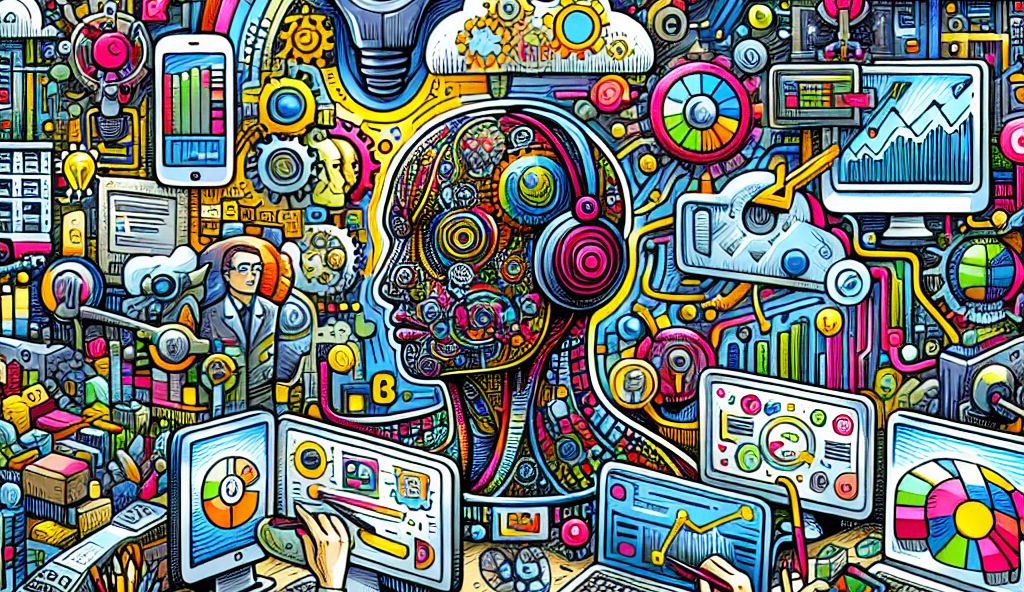
“The Evolution of Painting and Technological Innovations, 1970–2020”

# The Perseverance of Painting: A Vision Through MCA Chicago’s *The Living End* Exhibition
For decades, many art critics and cultural commentators have declared, time and again, that *“painting is dead.”* Yet, a recent exhibition at the Museum of Contemporary Art Chicago (MCA) refutes this tired refrain by vividly demonstrating that painting remains alive and dynamic, steadily evolving alongside technological advancements and cultural shifts. The exhibit, titled *The Living End: Painting and Other Technologies, 1970–2020,* presents painting as a medium in a continual state of renewal, rebirth, and reinvention.
Spanning over five decades of artistic evolution, *The Living End* assembles a wide-ranging collection of artwork from a global cohort of 60 artists, placing painting in conversation with emerging technologies and digital culture. The exhibition thrives on its ambitious scope, exploring key moments in painting’s journey through the lenses of video art, performance, digital imaging, and computer-assisted techniques. Through the curation, painting is celebrated not just as a medium of physical expression but also as a field intricately linked to a variety of other technologies, profoundly shaped by the context in which it exists.
### Painting Through Half a Century of Technological Shifts
The exhibition reflects radical shifts in the production and understanding of visual art over the past 50 years. In particular, MCA Chicago has carefully curated works that underscore painting’s interaction with photography, video art, and, more recently, digital tools and social media cultures. Artists featured in the show have consistently re-imagined the boundaries of what can be considered part of painting and how paintings are made, underlining the exhibition’s thesis that the art form continually evolves and adapts.
Jamillah James, the Manilow Senior Curator and one of the lead organizers of the exhibition, explains the curation process as a “mirror image” that spans two temporal periods. According to James:
> “The way that the show is organized is this mirror image that looks at how artists used early computers and early media production tools like the Xerox machine, and then how artists are now beginning to outsource the production of their work to computers, printers, other people, so on and so forth. And these two mirror images are situated at different points in history. The show is looking at a trajectory and a forward progression of these ideas from the 1960s and even before that to the present.”
This duality punctuates the exhibit’s conceptual foundation—positioning early experiments with computers alongside contemporary practices in which digital tools play a significant role in the creation of visual art. By doing so, the curation highlights the continuous interplay between traditional art forms and new, emergent digital technologies.
### Highlights of the Exhibition
Several standout pieces in *The Living End* bring this intersection between painting, technology, and cultural shifts to life. Jacqueline Humphries’ striking *MN+//ssss* (2023)—an oil-on-linen painting—serves as an expansive and nuanced engagement with the evolving textuality of digital and social media culture. Her work weaves symbols, glitches, and codes into layers of oil paint, reflecting the ramifications technology has on visual representation today. Measuring a sprawling 114 by 127 inches, the painting reclaims the painted medium amidst the digital age, situating it within dialogues of technology-driven visual culture and data symbolism.
Additionally, Cheryl Donegan’s work, *Whoa Whoa Studio (for Courbet)* (2000), brings a nontraditional, performative aspect to the exhibit. A short video piece of just over three minutes, Donegan imbues the mechanical reproduction and visual distortion of images with conceptual weight, offering an ironic homage to traditional painting through video medium. Her playful manipulation of images makes us re-evaluate what constitutes painting and how artworks are consumed in a post-analog world.
The exhibition’s diverse approaches to painting foster an environment where past and present sensibilities collide. It serves as a powerful reminder that even though mediums like photography or digital media have gained prominence, painting remains a cornerstone of artistic expression and investigation, growing stronger as it intersects with new avenues of creativity.
### Beyond the Canvas: Expanding the Definition of Painting
While classical painting techniques still occupy a major space in the exhibition, *The Living End* also delves into how artists challenge the fundamental assumptions of what constitutes painting. Over the years, what was once confined merely to hand-painted canvases has expanded significantly. Contemporary artists now question the limits of craftsmanship, the function of the brushstroke, and even the role of human intervention within a painting.
With multiple works in the show, artists explore the possibility of collaborative relationships between themselves and the technology around them, from outsourcing art production to computers and printers to incorporating social media aesthetics directly into the canvas. What results is a perspective on painting that’s far more complex and multifaceted than ever before.
Some contemporary works highlight the expansion of digital technologies in painting, pushing previously impossible